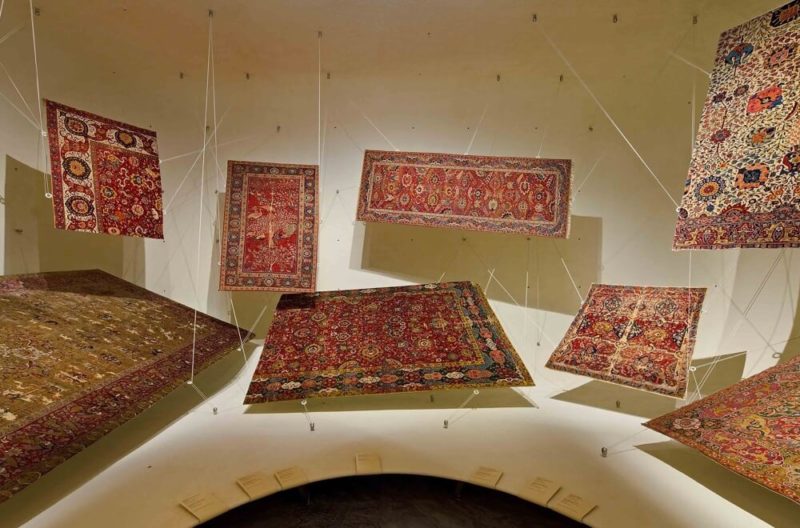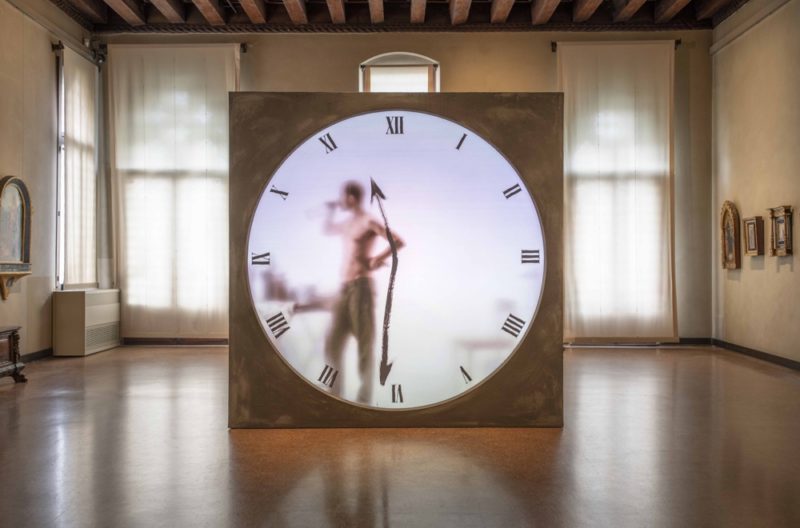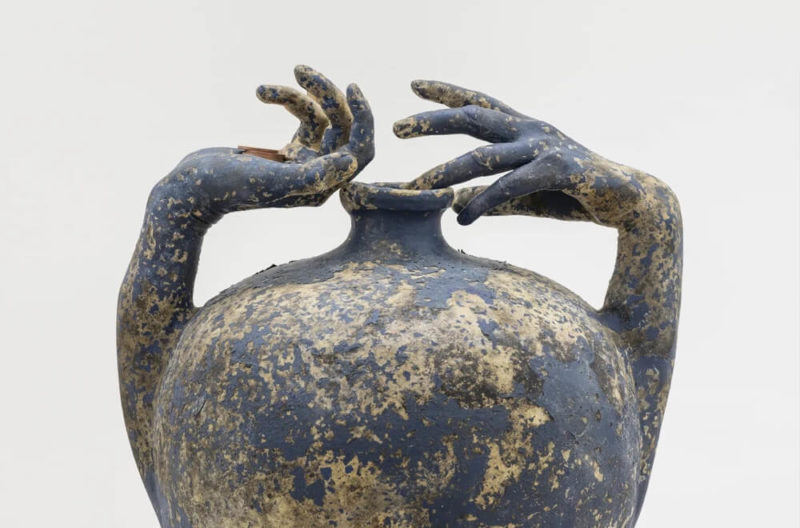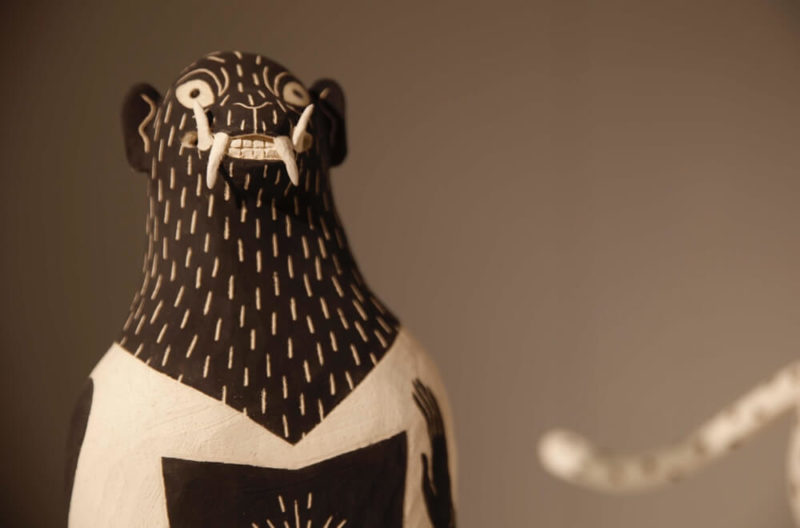Elective Affinities
Edmund de Waal's installation of sculptures at The Frick challenges visitors to look afresh.
The Frick Collection, New York
30th May – 17th November, 2019
IS STILLNESS THE same thing as a still life? Edmund de Waal poses this question in his newest site-specific installation ‘Elective Affinities’, currently on view at The Frick Collection. He asks in ceramic, but not in seventeenth-century Sèvres from the Frick’s holdings, rather de Waal has created a series of vessels in black and white porcelain, accompanied by steel and bits of gold. With pieces scattered throughout the gilded-age mansion, ‘Elective Affinities’ enlivens the stately institution, which seems to have gone almost unchanged since Mr. Frick’s death in 1919. As a house museum, The Frick is known for its permanent installation of artworks from Henry Clay Frick’s personal collection, dating from medieval times up to the late nineteenth-century. The rooms remain furnished with all shapes of tables and chairs; chandeliers cast light upon portrait busts, vases and clocks, which sit atop sideboards and mantles — and, of course, hung upon the walls are paintings by the likes of Rembrandt and Turner. The objects appear firmly entrenched in their relationships to each other, to the house and to history. ‘Elective Affinities’, however, encourages visitors to take a second glance at these steadfast works by juxtaposing them against contemporary pieces.

Edmund de Waal, ‘on an archaic torso of Apollo’, 2019, on view in the Fragonard Room
COURTESY: © Edmund de Waal and The Frick Collection / PHOTOGRAPH: Christopher Burke
The exhibition is headed by Charlotte Vignon, Curator of Decorative Arts at The Frick, who has previously worked with de Waal on a pair of candelabras in the collection by Pierre Gouthière. Made of white porcelain topped with gilt-bronze candleholders, the candelabras were the focus of the publication Gouthière’s Candelabras, which includes a historical essay by Vignon and critical commentary by de Waal. During the collaboration, Vignon says she discovered that both herself and de Waal have an interest in the ability of objects to “reveal stories in discrete ways.” Vignon helps manifest these stories through writing and exhibitions. De Waal is, likewise, a writer, but he is also a potter, creating minimalist ceramics that call attention to surrounding objects through their material and placement. This led to de Waal’s commission. De Waal’s personal history with The Frick suited the project, as well. He visited the museum for the first time at age seventeen and was “baffled” by the way the precious artworks were situated throughout the house, claiming that ever since, the experience has influenced the way he has worked with objects in existing spaces.
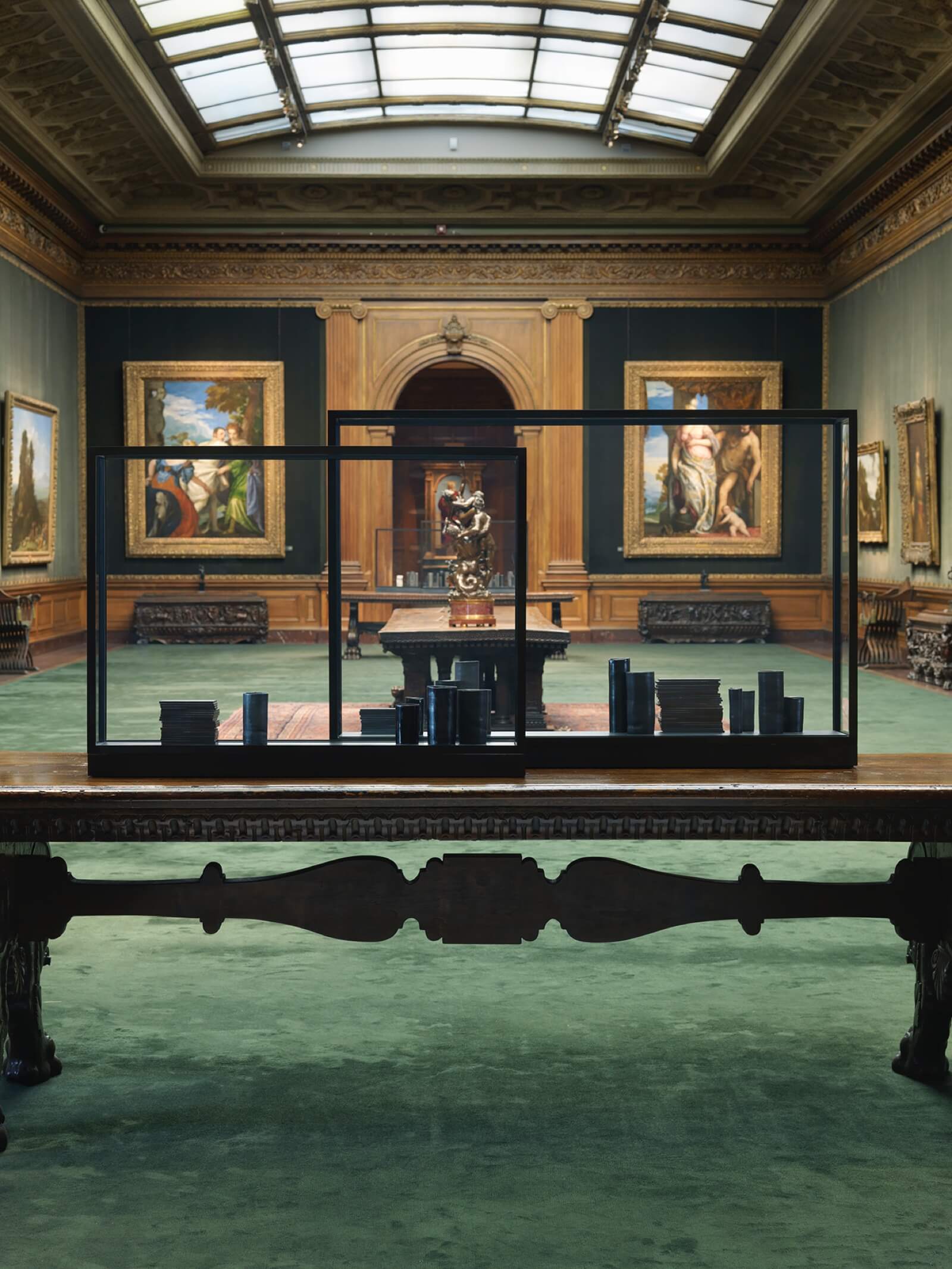
Edmund de Waal, ‘noontime and dawntime’, 2019, on view in the West Gallery
COURTESY: © Edmund de Waal and The Frick Collection / PHOTOGRAPH: Christopher Burke
De Waal is no stranger to site-specific work, having previously created installations for the Artipelag in Stockholm, Chatsworth House in Derbyshire and Waddesdon Manor in Buckinghamshire, England. The Frick Collection, though, is an unusual case. Unlike these other institutions, The Frick has never before invited contemporary art into its spaces. ‘Elective Affinities’ also comes at a time when The Frick is preparing to transition into a modern building while the mansion undergoes renovations — Marcel Breuer’s 1966 brutalist museum on Madison Avenue will soon be the collection’s temporary home. Before the move, ‘Elective Affinities’ demonstrates how the current installation is one “of mobility, not of stasis … where things are contingent,” as de Waal said in a lecture on the exhibition, observing how the collection, though physically stable, changes due to the constellation of historical narratives constantly being rediscovered and challenged. Upon visiting ‘Elective Affinities’, it may seem that not much about the rooms has physically altered, but this is the point. De Waal’s pieces emphasise the presence of the surrounding objects — it is not the rooms and the things within them that change, but our perspective.
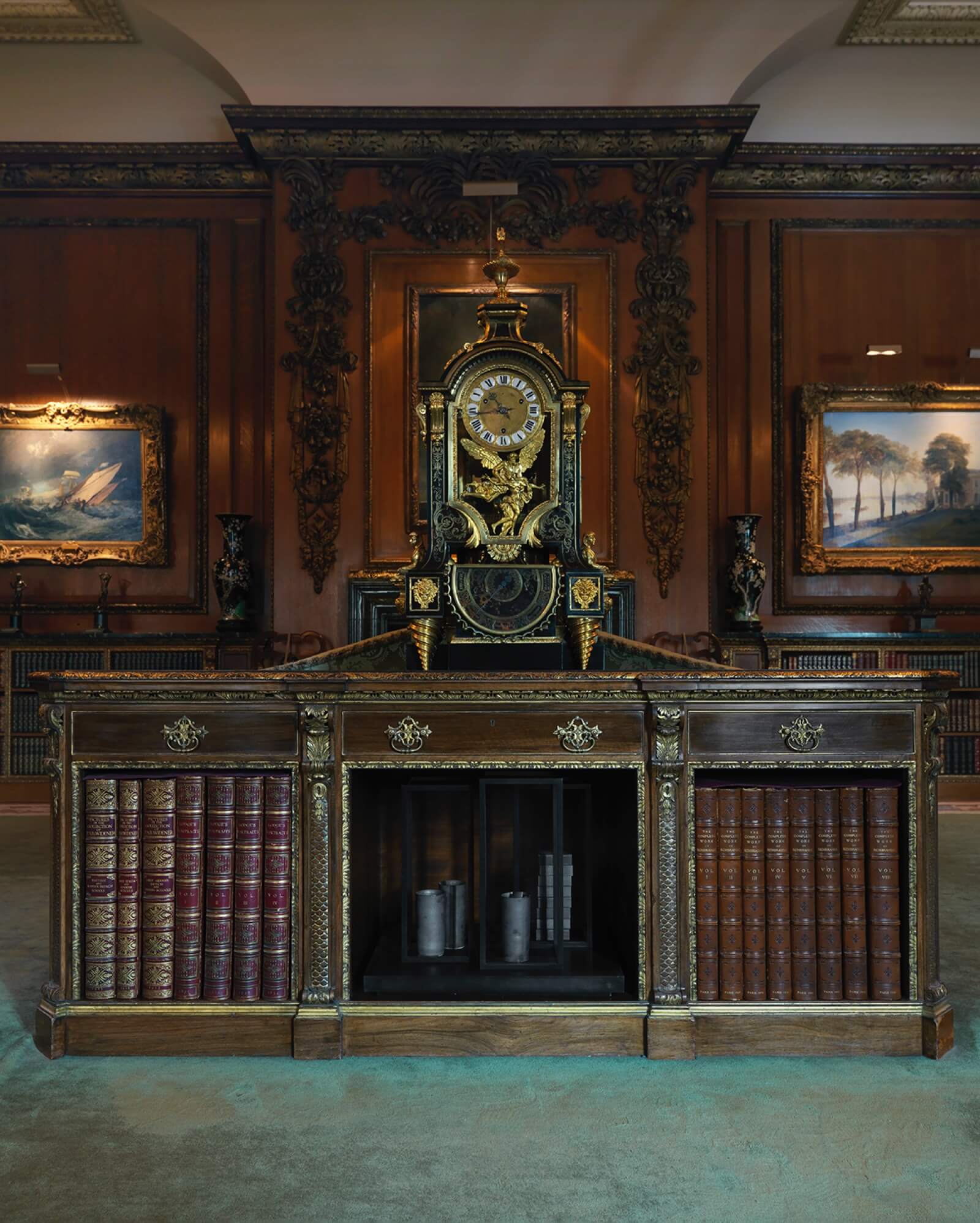
Edmund de Waal, ‘an alchemy’, 2019, on view in the Library
© Edmund de Waal and The Frick Collection / PHOTOGRAPH: Christopher Burkeh
De Waal’s vitrines stand out in a museum where the majority of the collection is shown without barriers. Like small stage sets, they remind us that the entire museum is in itself a stage for objects. In the West Gallery, two large steel vitrines sit upon Italian renaissance tables on opposite ends of the room, as though a dialogue between two people, silently echoing the hall’s portraits. Beneath Gainsborough’s paintings of Mrs. Peter William Baker and The Honourable Frances Duncombe in the Dining Room, steel and porcelain are mixed in a work which reflects both the force and femininity of the two women. Look carefully inside of one of the vessels and you’ll find fragments of ceramic scribbled with poems by Emily Dickinson, lending her strong will and words.
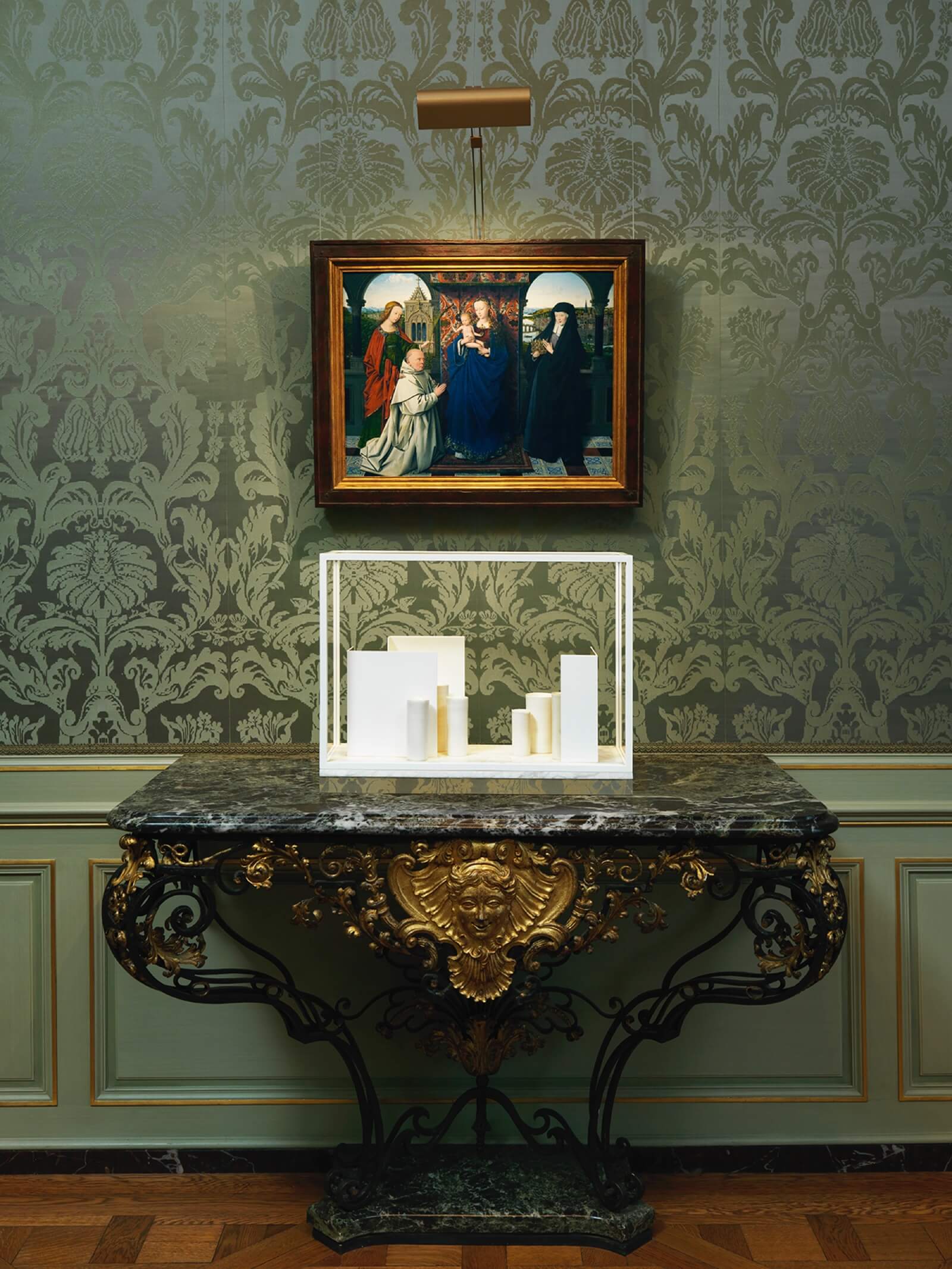
Edmund de Waal, ‘an annunciation’, 2019, on view in the Anteroom
COURTESY: © Edmund de Waal and The Frick Collection / PHOTOGRAPH: Christopher Burke
In the Boucher room, a golden vitrine filled with white porcelain hovers above a thick slab of plexiglass, giving the piece a sense of weightlessness, floating as the figures in Boucher’s gardens. Golden light is emitted from within ceramics in the Anteroom, a sort of annunciation, claims de Waal, an encounter between the viewer and the sculpture — as well as the sculpture and the gallery’s gilt religious works. De Waal’s most imposing piece holds its own aside portraits by El Greco, Bellini, and Titian in the Living Hall. Black porcelain and hefty steel emit a sense of authority amongst the faces of the room’s great men.
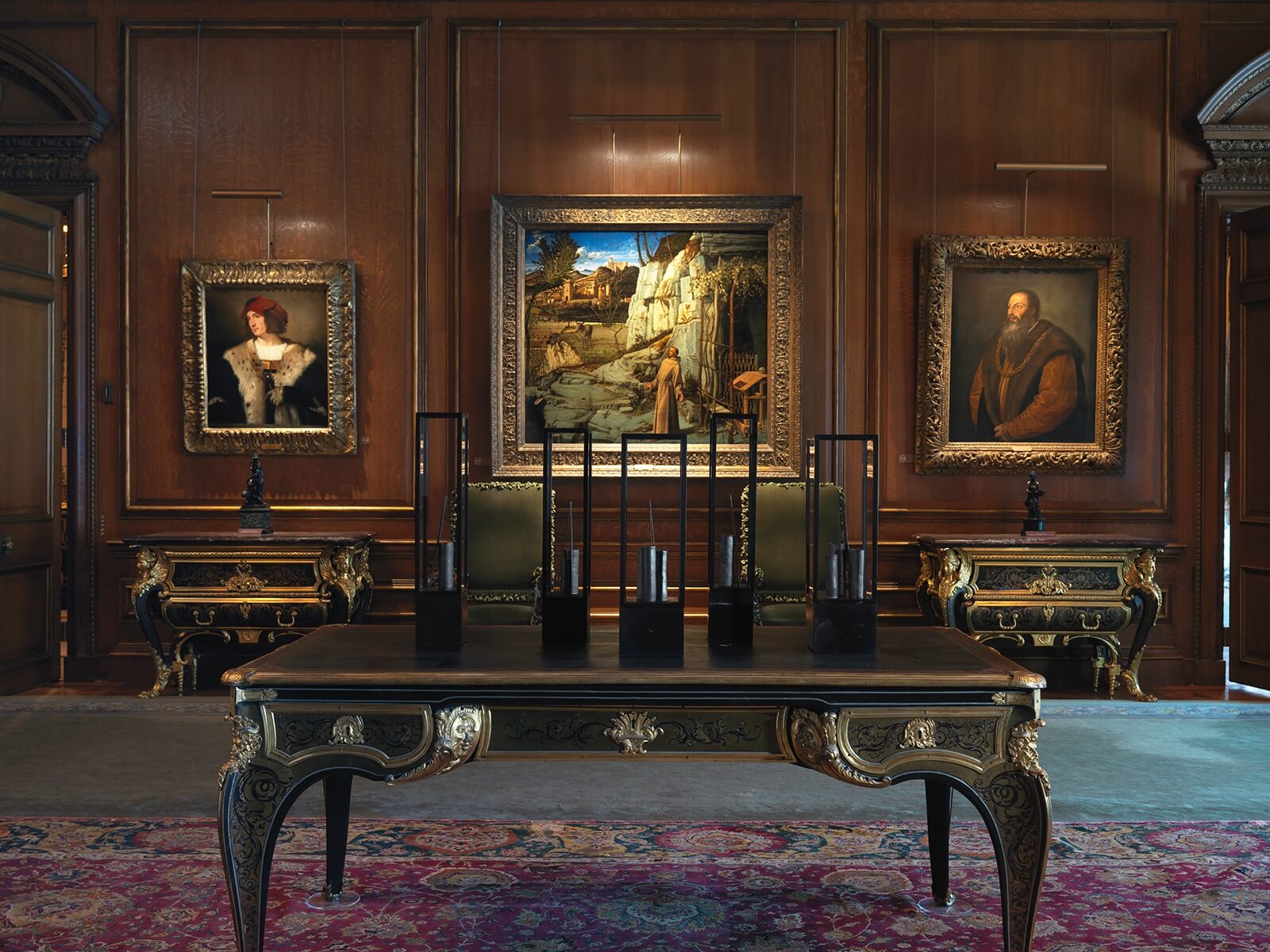
Edmund de Waal, ‘sub silentio’, 2019, on view in the Living Hall
COURTESY: © Edmund de Waal and The Frick Collection / PHOTOGRAPH: Christopher Burke
In the Library, de Waal removed Frick’s ten-volume collection of the 1896 Book of Wealth, replacing it with steel, porcelain, and a few scraps of gold — materials which are perhaps more representative of Frick’s fortune. Similarly, in the West Vestibule, de Waal brings a sort of gravity to the narrow hall with a series of four steel and black porcelain garnitures. The works are positioned to capture the movement of light across their dark surfaces, revealing that their “monotone” colour has much more to offer. Finally, Ingres’s celebrated ‘Comtesse d’Haussonville’ is framed and reflected by high-fired ceramics that have surfaces as delicate and luminous as the portrait’s subject.
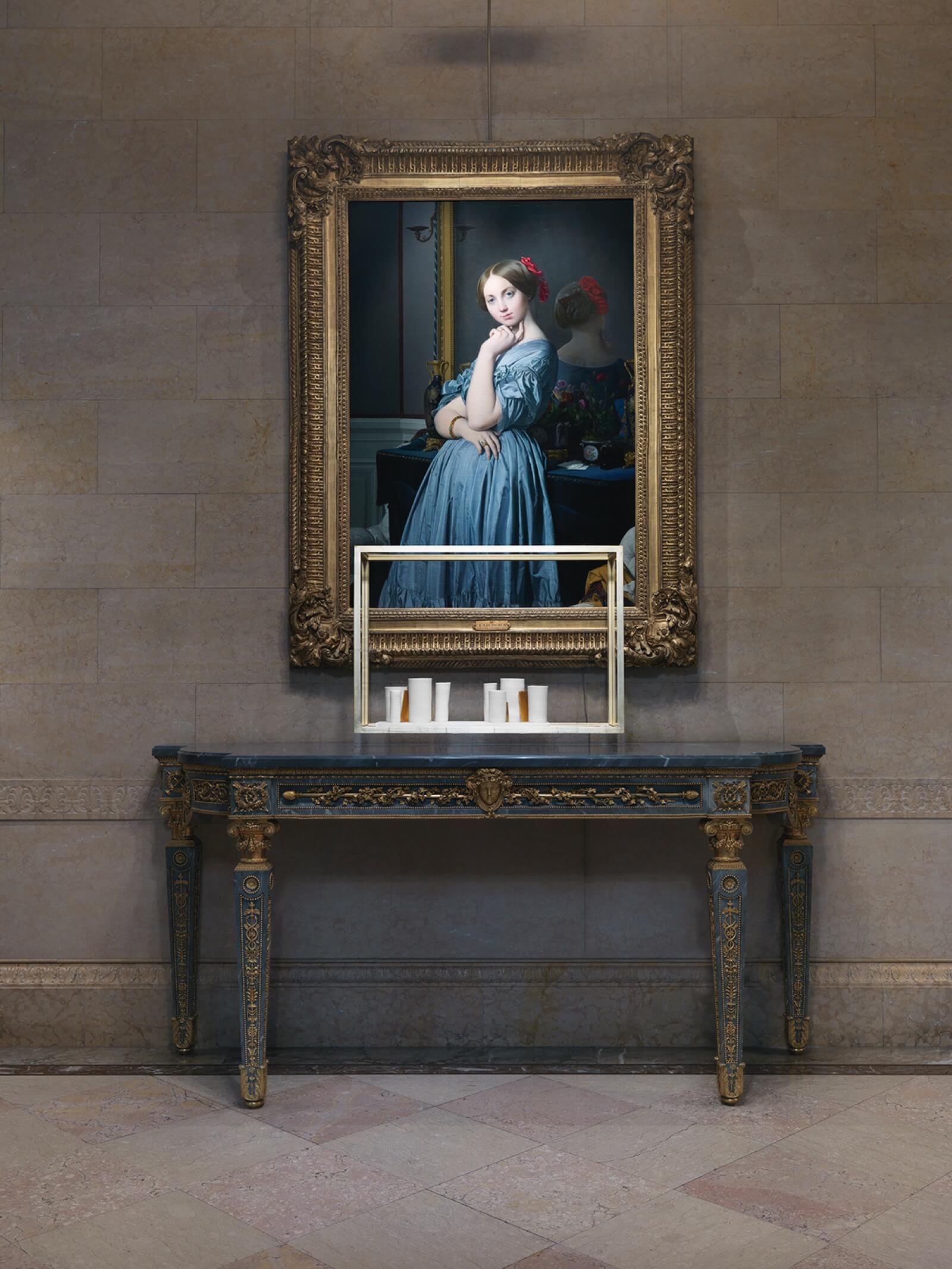
Edmund de Waal, ‘that pause of space’, 2019, on view in the North Hall
COURTESY: © Edmund de Waal and The Frick Collection / PHOTOGRAPH: Christopher Burke
Examining The Frick Collection through de Waal’s pieces brings forth a challenge to the institution as it moves into the twenty-first century: that of reconsidering its sometimes troubled history. Henry Clay Frick made the money he used to assemble his collection through iron and steel manufacturing. He was opposed to organised labour, and the Homestead Massacre in July of 1892 stands out as a particularly violent event, wherein ten of Frick’s workers were killed and sixty wounded after security guards opened fire against strikers attempting to unionise. Today, openly acknowledging how it is not only the history of the objects themselves that matters, but also the way in which the objects came to be in the collection, is a leap forward in bringing The Frick into contemporary dialogues. As it prepares to renovate, grappling with this shifting identity will allow The Frick to question and uncover its rich historical narratives, considering both their temporality and timelessness. “I want people to look at things,” said Vignon — this means not only looking at the things themselves but at where they come from and the layered stories they tell. Fostering this investigation are de Waal’s pieces in ‘Elective Affinities’, which encourage stillness, reflection, and in the process, reveal the life in the objects of The Frick Collection.
The Frick Collection – an art museum housing the collection of industrialist Henry Clay Frick, located in New York City.




